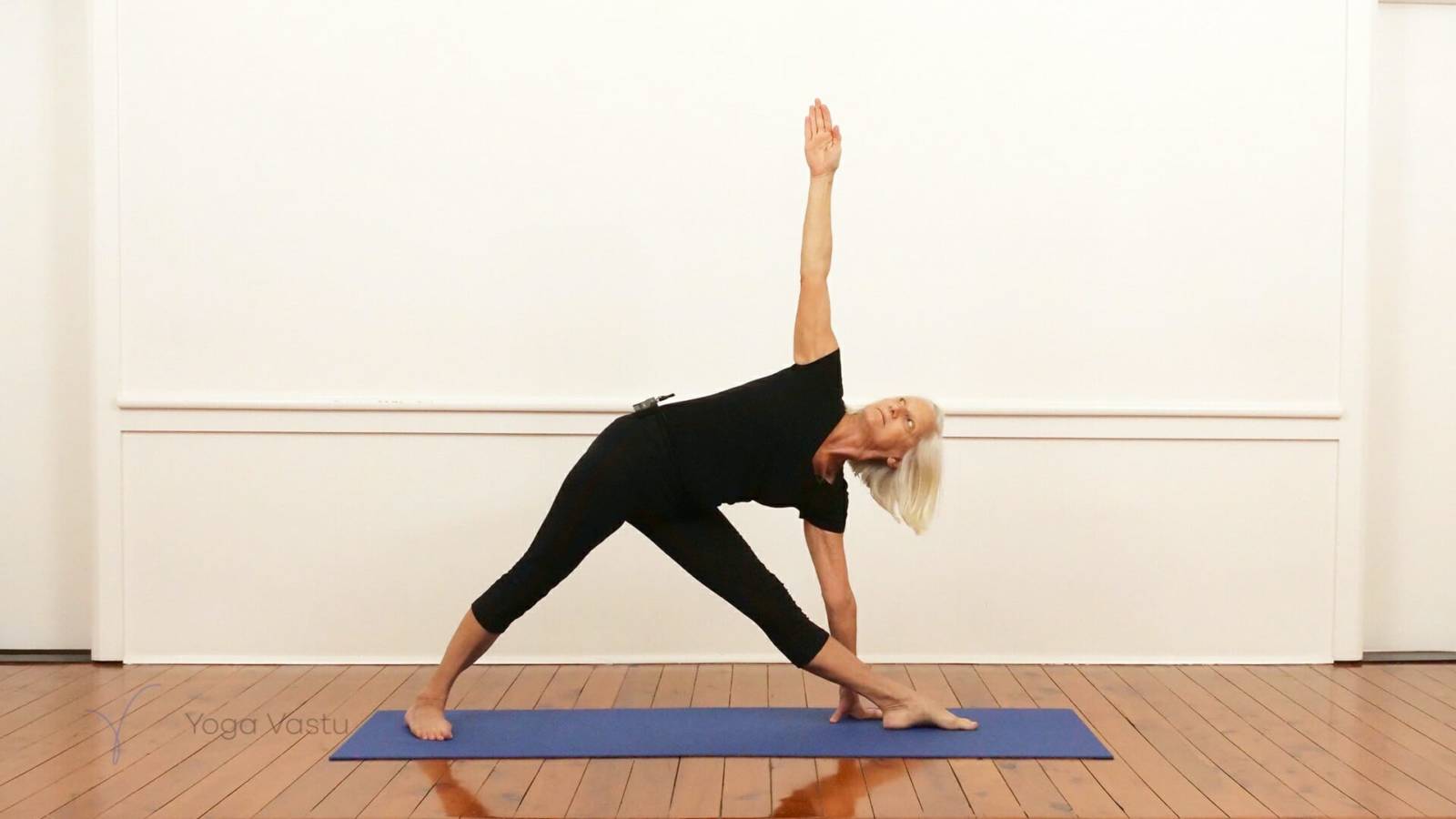Sequence description
This class takes the student through a classic standing pose sequence, emphasising certain actions to follow and things to observe as we come to each pose. By focusing on the body and the actions to take, our mind turns inwards, and whilst stabilising the body the mind also becomes quiet and steady.
Standing poses can be practised in many ways, with and without supports. In this session, we will aim to do all the poses without the wall or extra supports. Personally, even with hip restrictions, I do the standing poses without wall support from time to time to see where I am at any given time and to find out how much space, opening, and stability I can create through inner adjustments despite the outer challenges.
However, you should take what you personally need for any required modifications.
Step by step instructions
Start in Supta Virasana and then move to Adho Mukha Svanasana, repeated twice and Full Arm Balance, done leading with alternate legs. Pincha Mayurasana to the wall follows.
To prepare our legs and to focus on whatever stiffness or freedom we find in the body today, go to Utthita Hasta Padangusthasana 1 and 2, top leg foot to the wall. Create space at the backs of the legs and become conscious of those areas and what you find. We correct well when we are clear in what we see.
The full standing pose sequence is practised in this session, with the exception of Parivrtta Ardha Chandrasana. How are our Tadasana actions reflected in the standing poses? One informs the other.
Stand in Tadasana a moment after Prasarita Padottanasana and see what the body now tells you. What has worked more, what has worked less? How is the mind at the end of the standing poses? It’s important to take a moment to assess where we are at the end of a sequence to then make a smooth transition to the next segment.
Lie back in Supta Virasana to release any leg tension and hardness and to bring quietness to the breath.
Sirsasana follows, with a few variations, or chair Sirsasana if not doing the full pose. Create balance with Sarvangasana, Halasana, and variations.
Finish with Savasana, mentally exploring all the different parts of the body to see if there is residual hardness or imbalance. Release. Find the stillness after all the physical movement.
Notice how Yoga tends to always bring us back to a steady point and how it leaves us with a good connection between the mind and the body.
Illustrated sequence of video
Download and print the free illustrated sequence of this video.

